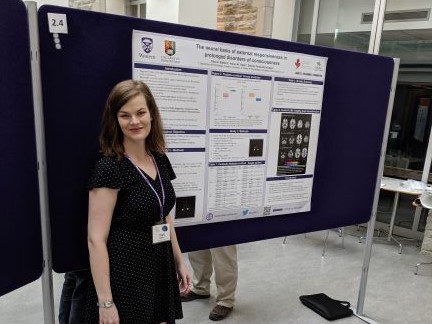The neural basis of external responsiveness nin prolonged disorders of consciousness
 Poster ASSC 2019. Clara Stafford.
Poster ASSC 2019. Clara Stafford.Abstract
The current gold-standard for diagnosing disorders of consciousness (DOC) is standardized behavioural scales (e.g., Coma Recovery Scale-Revised (CRS-R)), which require the patient to demonstrate their level of awareness through overt responses. The patient’s ability to produce discernable behavioural indicators in response to various sensory stimuli determines whether the patient is diagnosed as in a vegetative state (VS) or a minimally conscious state (MCS). The VS is characterised by reflexive responses, while intentional responses characterise the MCS. Recent neuroimaging studies have emphasised the problems related to this reliance on external behaviour - if an aware patient were unable to produce overt responses due to motor dysfunction, they would be misdiagnosed as VS. It has been proposed that damage to motor cerebello-thalamo-cortical pathways could explain the lack of intentional motor responses after brain injury in an otherwise aware patient. We used diffusion tensor imaging to reconstruct and assess the structural integrity of thalamo-motor, cerebello-thalamic and cortico-cerebellar tracts in DOC patients and healthy controls. Structural integrity was measured using the fractional anisotropy of each tract. DOC patients showed significantly reduced fractional anisotropy relative to controls on the fibres connecting the thalamus and the primary motor cortex. This went above and beyond a widespread injury to the white matter and correlated with clinical severity. In a subset of patients, we also identified a similar pattern of injury in the fibres connecting the primary motor cortex and the cerebellum but relative preservation of those connecting the cerebellum and the thalamus. Our results suggest that damage to motor fibres plays a role in the degree of external responsiveness exhibited by DOC patients. The associated reduction in the patients' overt motor performance could be masking their level of awareness, and thus interfering with diagnostic accuracy.